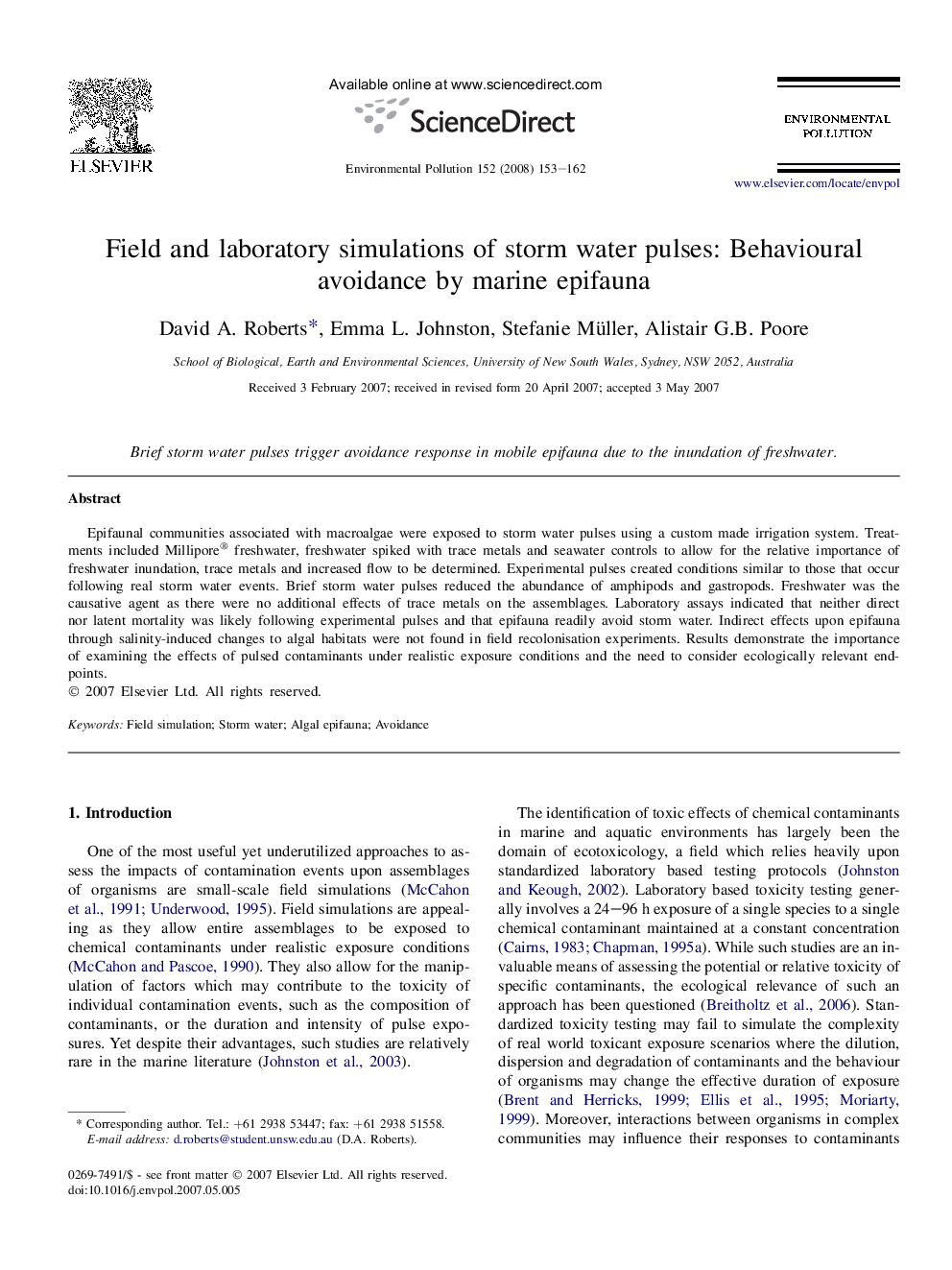| Article ID | Journal | Published Year | Pages | File Type |
|---|---|---|---|---|
| 4426945 | Environmental Pollution | 2008 | 10 Pages |
Epifaunal communities associated with macroalgae were exposed to storm water pulses using a custom made irrigation system. Treatments included Millipore® freshwater, freshwater spiked with trace metals and seawater controls to allow for the relative importance of freshwater inundation, trace metals and increased flow to be determined. Experimental pulses created conditions similar to those that occur following real storm water events. Brief storm water pulses reduced the abundance of amphipods and gastropods. Freshwater was the causative agent as there were no additional effects of trace metals on the assemblages. Laboratory assays indicated that neither direct nor latent mortality was likely following experimental pulses and that epifauna readily avoid storm water. Indirect effects upon epifauna through salinity-induced changes to algal habitats were not found in field recolonisation experiments. Results demonstrate the importance of examining the effects of pulsed contaminants under realistic exposure conditions and the need to consider ecologically relevant endpoints.
